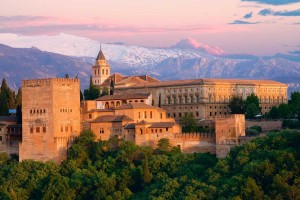- Have any questions?
- +34 951 273 575
- info@allaboutandalucia.com
Remains of ancient Arab city in southern Spain makes UNESCO World Heritage Sites list

West End comes to Sotogrande in aid of charity
June 25, 2018
Andalucia tech company to send solar panels into space
July 16, 2018
ANCIENT CITY: Medina Azahara
THE remains of an ancient Arab city in Andalucia has been added to the list of UNESCO World Heritage Sites last weekend.
Settled on the outskirts of Cordoba, 10th century Medina Azahara meaning ‘the shining city’ in Arabic, was once the de facto capital of al-Andalus, also known as Muslim Spain, and was built as an imposing, luxurious symbol of power.
The incredibly well-preserved settlement, built between 936 – 940, had been buried for around 1,000 years until it was re-discovered at the beginning of the 20th century.
According to the Unesco’s World Heritage Committee, the site is a ‘complete urban ensemble’ that offers ‘in-depth knowledge of the now vanished Western Islamic civilisation of Al-Andalus, at the height of its splendour.’

LUXURIOUS: The city was built as a symbol of power
Experts say the medieval Moorish city is a perfect example of the advanced urban architecture of the Umayyad culture, which had at the time an aqueduct that supplied running water to buildings and its 25,000 inhabitants, along with bridges, roads and decorative ornaments.
After prospering for several years, the opulent city was ‘laid to waste during the civil war that put an end to the Caliphate in 1009-10,’ added UNESCO.
Recognised as the first Umayyad Caliphate of Cordoba – a state in Islamic Iberia ruled by the Umayyad dynasty hailing from Mecca – the opulent city was designed to intimidate enemies and rival the caliphates of Baghdad in Asia and Ifriqiya in North Africa.
Legend has it the spectacular city and its palace were built as a tribute for Caliph Abd-ar-Rahman III’s favourite wife, Azahara.
During the 10th century, Cordoba and its palatial Medina Azahara were recognised as privileged locations.
Scientists, astronomers, philosophers, musicians and mathematicians, hired by the Caliph, produced work which was key to the appearance of the Renaissance era five centuries later.




